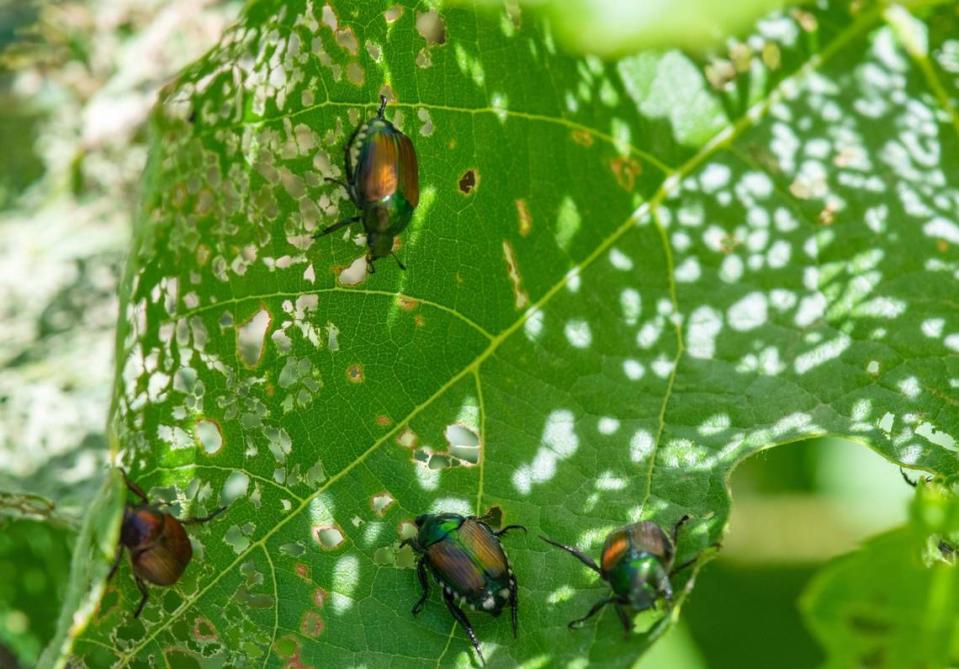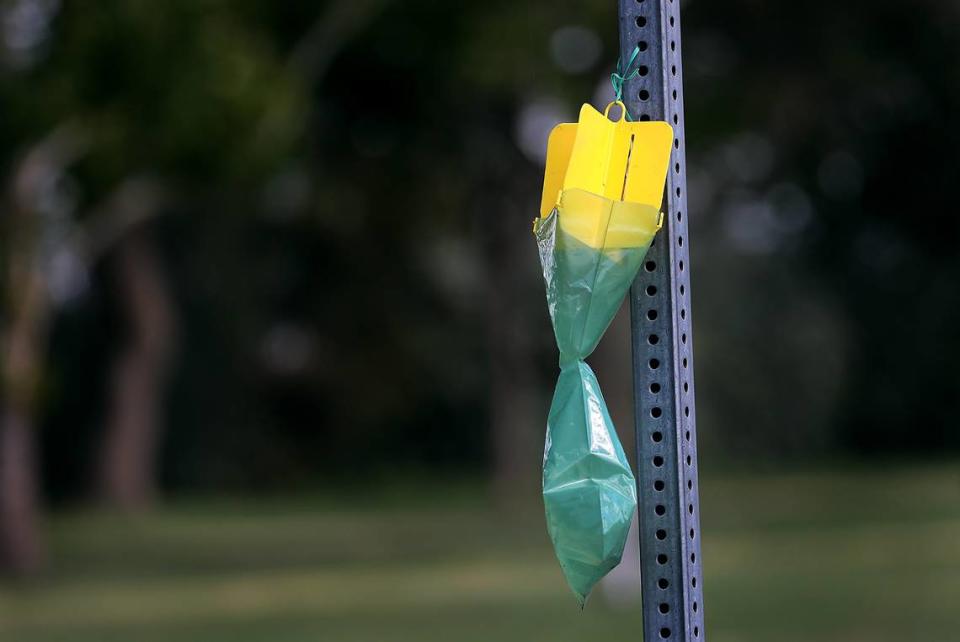WA proposes yard debris quarantine for some of Tri-Cities after destructive beetles found
The state of Washington is working toward imposing a quarantine on 1.5 square miles in Pasco to prevent the spread of the highly destructive Japanese beetle by restricting the removal of lawn and garden debris.
The Washington state Department of Agriculture is in talks now with the city of Pasco to identify a location that residents can use for free within the quarantine area to dispose of debris that is under restrictions because of its potential to harbor the insects, said Camilo Acosta, the state Japanese beetle eradication coordinator, at a Franklin County Commission meeting.
The proposed quarantine would be added to trapping and planned spraying to eradicate what now appears to be a small infestation.
The quarantine area could be from near Interstate 182 south to the Columbia River and from near Road 46 east to almost Road 30 covering 1,058 properties. Most properties are residential with some parks and schools, according to the Department of Agriculture.
It would be similar to a quarantine already imposed in the Grandview area. It prohibits the removal of soil or sod or plants not free from soil, such as fruit trees and potted plants, from the quarantine area year round.
The removal of plants and plant cuttings, roots, grass clippings, cut flowers, among other vegetation that could harbor Japanese beetles, is prohibited May 15 to Oct. 15, the season when adult beetles live.
Five Japanese beetles have been found in Pasco and the Department of Agriculture wants to prevent a situation like the one in Grandview where 24,000 Japanese beetles were trapped in 2022 and the quarantine covers 74 square miles.

“If Japanese beetles were to become established in Washington, it would pose a serious threat to gardens, parks and farms by destroying vegetation,” according to the state Department of Agriculture.
They feed on more than 300 plants, and can devastate grape crops, strip roses and other garden plants of their leaves, and damage turf at homes, parks and golf courses.
Farmers could be prohibited from sending agricultural products out of the area.
The state of Oregon has estimated that if Japanese beetles were to become established there, the economic impact to its crops, commodities and other related businesses could be approximately $45.5 million.
Property owners within about a square mile of the proposed quarantine zone are being asked for the first time this year to allow state workers to spray their property in the spring for the larvae of the beetles.
Letters are being sent to property owners there with permission forms they are asked to fill out. They also can fill out a form online in English or Spanish if they are in the area planned for spraying. Go to Washington Department of Agriculture to learn more.
Japanese beetles found
The first Japanese beetle in the Tri-Cities was found in Richland near a nursery and state officials believe it was a single beetle brought in with a plant rather than an infestation.
Then in July, a Japanese beetle was found in a Franklin County Horticultural Pest Control Board trap near Road 76 about a quarter mile south of Argent Road in Pasco.

The Washington state Department of Agriculture responded by putting out 250 traps and beginning inspections of nurseries in the area for possible signs of Japanese beetles.
A total of four more beetles, caught in three traps, were found over a square mile area near the U.S. Post Office on Court Street and at different Henry Street addresses in the Road 36 area.
The beetles, native to Japan and southeast Asia, are metallic green and brown and have little tufts of white hair on their sides as adults.
They overwinter in lawns or other soil and then emerge in June in the Mid-Columbia to feed on more than 300 ornamental and agriculture plants, turning the plants into skeletons as they consume the foliage, flowers or fruit.
During their grub stage they also can attack grass roots, according to the U.S. Department of Agriculture.

